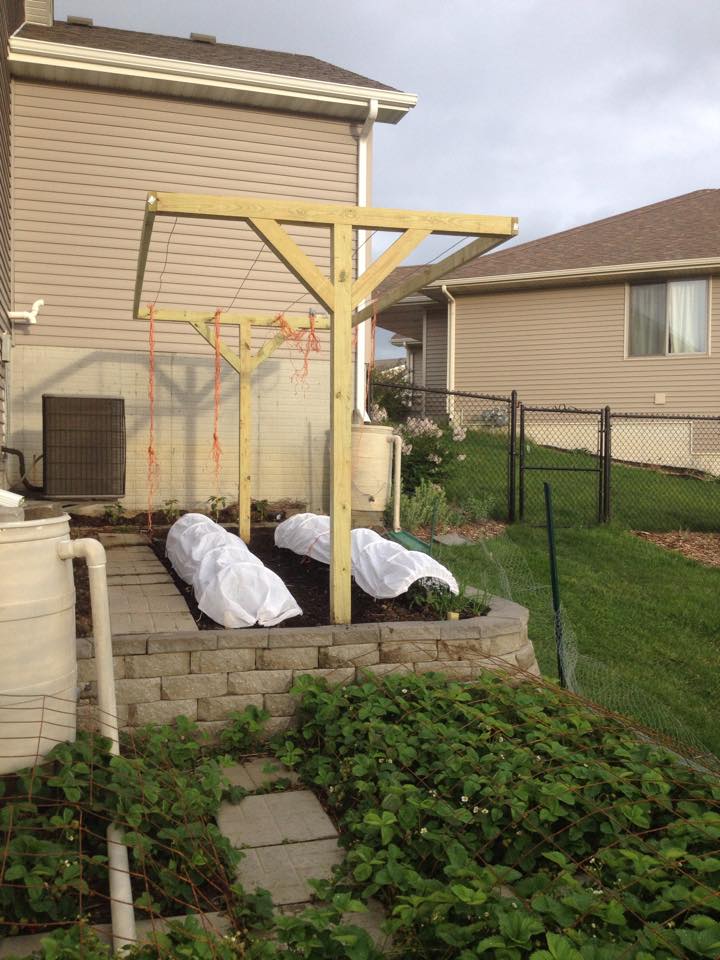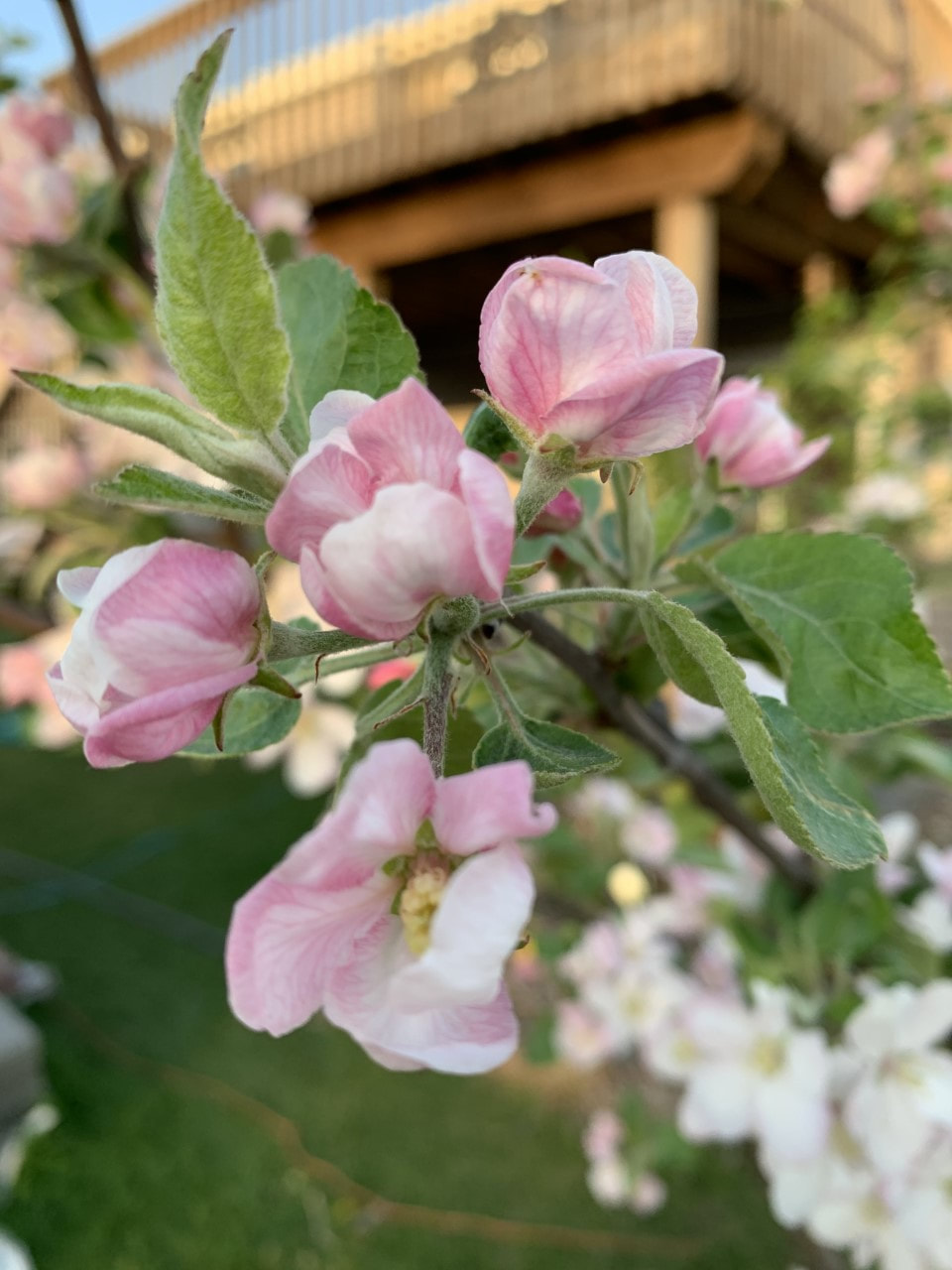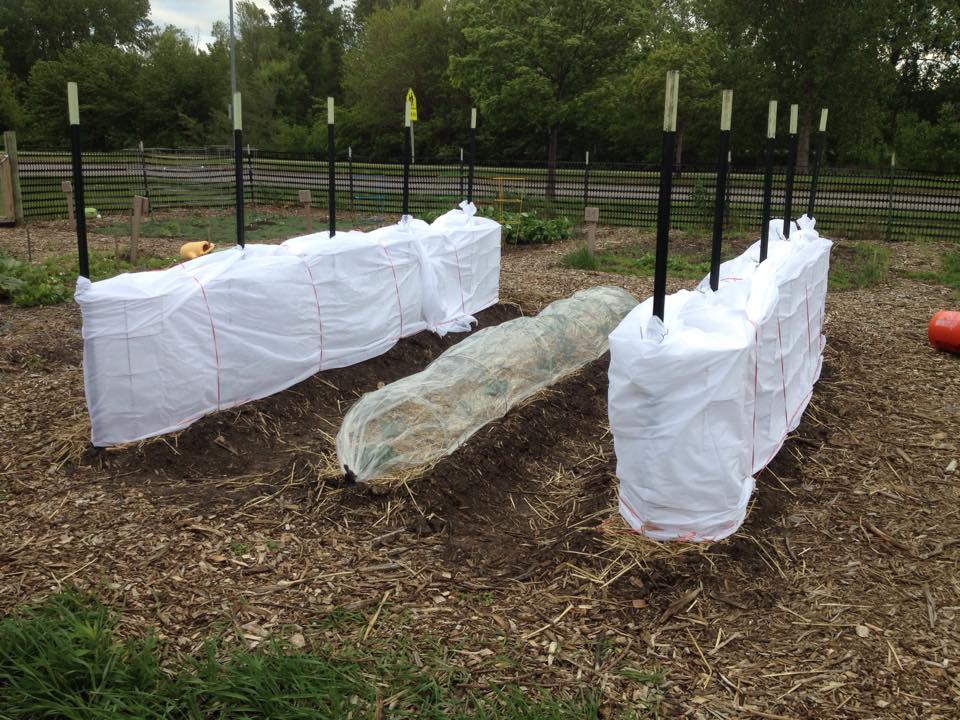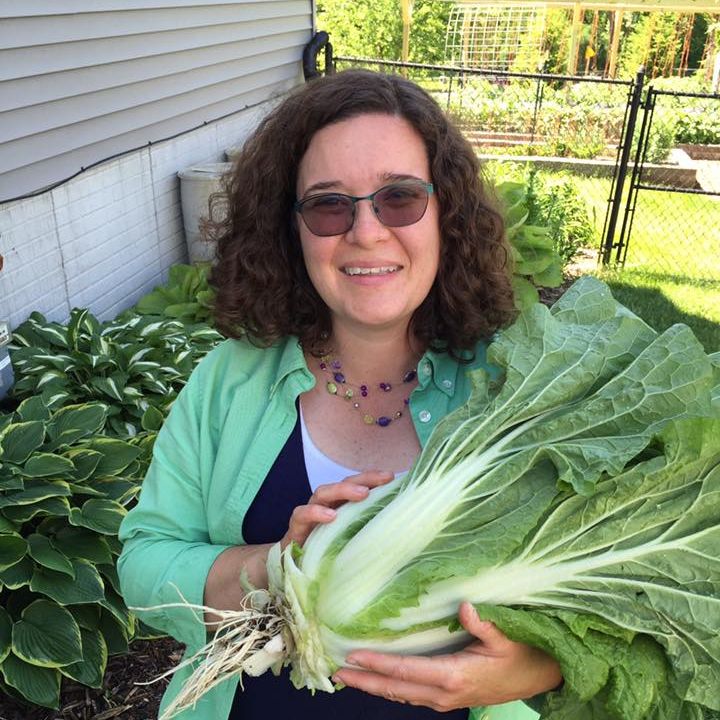|
Early spring is an exciting time in the garden. The greenhouses are full of blooming annuals. The leaves are back on the trees, my apple trees are blooming, the grass is green, and things are growing so it must be time to plant right? It depends. My Facebook feed reminded me that May 3rd six years ago I was shoveling snow. The standard wisdom is to wait until Mother's day to plant frost tender flowers and veggies. That is because our average last frost date is May 9th. However averages, are just that averages. Even though April ended amazingly warm, it looks like the start of May will be unseasonably cold. A late frost is not out of the question at this point, and the overnight temperature Friday night says we could get frost. In the pictures below you will see that five years ago we had to cover our plants on the 20th of May! The next six days the overnight temperatures look cold, we might even get frost. A frost would kill tender plants. Even if it doesn't freeze, warm season plants will still complain this week. We have been running the propane heaters again this week. They really want overnight temps in the 50's or higher. It is not a good week for frost tender vegetables like peppers, tomatoes, eggplant, squash and melons to be outside. Even if a frost doesn't kill them, they will not be happy in these temperatures. So what do you do if you already planted them out in the garden? Don't worry! We've got this covered! How do I protect frost tender plants? When the forecast is cold, we take tender plants in pots indoors, (a covered porch or garage is fine) and cover those that are already planted. We have learned through experience that where we are on a slope, the backyard will be colder than the front yard. That means when the forecast is 40 degrees we pretend that it might freeze. We don't want the temperature to unexpectedly dip and cause us to lose the garden plants we worked so hard on. Here are a few tips for covering tender plants during spring cold snaps. 1. Try to create and air pocket to preserve heat from the soil. The air cools down very quickly when the sun goes down, the ground stays warm longer. You want to capture some of that heat and wrap it around your plant. You can buy frost cloths, or I have used blankets, bed sheets and plastic to try to keep the frost off. A bucket turned over on top of a tender plant is usually good for a few degrees of heating. A layer of cloth,covered with a layer of plastic is good insulation too. 2. Don't let the cover touch the leaves. If we get a frost, you will damage leaves that are touching the plastic directly. The cover really isn't the most important part, what you want is to have warm air circulating around the plants. A bucket overturned over small plants works well. For rows of veggies use wire, stakes, or tomato cages to put your covering over. You want something that covers, but doesn't directly touch the plant. This will also keep you from breaking stems or tender leaves. 3. Take the covering off during the day when the warmth returns, and cover again in the afternoon. You can't just put a bucket over your plants all week. They need the light and heat from the sun. The same covering that keeps the heat in will keep the heat out if you leave it on all day. In the mornings after things warm up, take the coverings off and let the plant get the sunshine and let the soil heat. Then in the afternoon when it is still warm, cover everything back up. That way you will capture some of the day's heat to carry them through the night. IF you took your plants indoors, remember to take them back out during the day. A week in the garage with no light would be hard on them. 4. Consider supplemental heat. While we have heaters and fans to keep plants warm in a greenhouse during cold snaps, I wouldn't use a heater and fan for plants already planted in a garden. However if you have individual plants covered with a bucket and you wanted to give yourself a little peace of mind, you could activate a hand or foot warmer or fill a water bottle with hot water and place it inside the bucket as well - just make sure you time it so they are still warm in the coldest hours of the morning. Most of the time when our greenhouse alarms go off it is early morning just before sunrise. That's when it gets really cold. If you have a row of small tender plants covered you could also add a string of non-LED Christmas lights to bump the temperature up a degree or two.  May 20, 2015 - Notice that we wrapped the tomatoes and put unrolled tomato cages over the strawberries and put blankets over them just in case since it was so late in May that they were already loaded with strawberries. The wire kept the blankets from pressing down on the plants and gave them a pocket of air. We took the blankets off as soon as the day warmed up so that they could get sunshine and warmth. How do I know which plants are frost tender?Even trees and experienced farmers can be fooled by a warm spring that ends with an unexpected cold snap. My apple trees are in full bloom, and even my grapevines are leafing out. They usually wait to get going until it is safe. However, I lose my apricot blooms every year to a late frost. Lots of the plants we grow originated in warmer climates, and they do not know how to deal with our Midwest weather. They need special care. Basil, tomatoes, peppers, melons, cucumbers, and eggplant will not take the cold. Even if it does not freeze, they will be unhappy in these conditions. They will not grow, they might drop blossoms, their leaves will show stress. They are warm season veggies. Pretend they came from southern California. If it gets down to 45 degrees they are thinking, "where is my winter jacket? Do you want me to freeze to death?"
If you can wait to plant them, wait until the overnight temperatures are in in 50's. If they are already planted, help them out on cold nights with a covering. Some plants are more hardy. We hit 60 degrees and they break out in shorts because they think it is so warm. My snow peas literally grew through our last spring snow. So did my onions garlic, parsley, and thyme. Oregano is hardy, tarragon can take some cold. Strawberries like the cool spring weather. Chives show up in my garden early and don't mind the cold. Rhubarb, kale, chard, spinach, beets, carrots, cabbage and celery will not flinch in the cool spring weather. They like it. Lettuce likes it cool too. Unless we get down to freezing temps these plants will be fine, and most of them will stand a light frost just fine. I won't worry about them this week. Comments are closed.
|
Archives
April 2022
Categories
All
|



 RSS Feed
RSS Feed